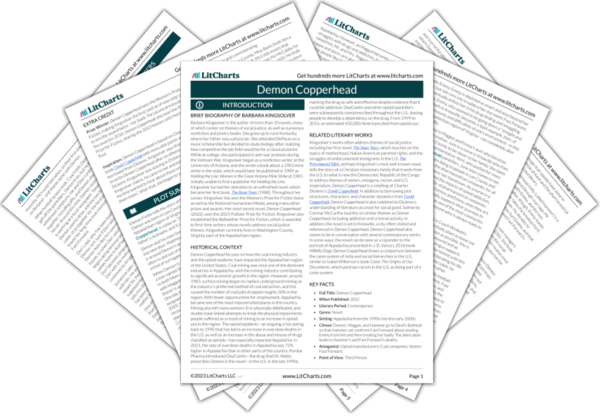Copperhead snakes symbolize the stereotypes, caricatures, and inaccurate and harmful judgments that outsiders can attribute to given region and its inhabitants. Demon says that a bite from a copperhead, a venomous snake, can cause a person serious pain and can even lead them to lose a hand or foot. People who aren’t from Demon’s holler (a small mountain valley where people live) say that the place is rife with copperheads. In all Demon’s time spent outdoors, though, he has never seen a single copperhead. “People love to believe in danger,” Demon says, “as long as it’s you in harm’s way, and them saying bless your heart.” According to Demon, people want to believe that his holler is dangerous because it makes them feel safer. The novel, through Demon, then, argues that people from outside Appalachia do a similar thing to the people of Appalachia when they rely on stereotypes instead of engaging with the people who live there and trying to understand the problems they face.
After Demon receives the nickname Demon Copperhead, he becomes like the myth of the copperheads in his holler. People who don’t know him want to believe that Demon—and, by extension, people from Appalachia in general—are “copperheads” in the sense that they are, according to those stereotypes, dangerous: dangerously ignorant, dangerously addicted to drugs, or dangerously poor. The novel argues that these stereotypes are wholly inaccurate and even harmful. Through its depiction of Demon Copperhead as a complex character who doesn’t fit the stereotypes that people from outside the region might try and pin on him, the novel dismantles those stereotypes and shows that while Demon may be named after a venomous snake, he is actually a vulnerable, caring, and complex person trying to find love and belonging.








